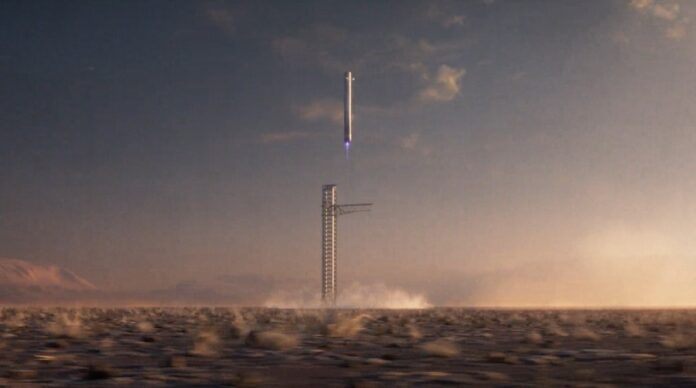Cosmoleap’s Big Money Boost
Cosmoleap has gathered over 100 million yuan to work on its new Yueqian rocket and a landing system similar to SpaceX’s style.
On November 1, Cosmoleap shared that it received more than $14 million from investors like Shenergy Chengyi, Tiangchuang Capital, Baiyan Fund, Legend Capital, and Zhang Chao. This funding will help them create an affordable and reliable rocket to assist with satellite Internet projects linked to China’s big constellation plans.
The company, officially named Beijing Dahang Transition Technology Co., Ltd., kicked off in March 2024. Their reusable “Yueqian” or “Leap” rocket aims to fly in 2025 or 2026, using a landing method that SpaceX has recently shown off with its Starship.
CosmoLeap / DaHangYueQian has completed a billion-dollar financing, for the “chopstick clamp” tower recovery test proposed. Full HD:
— CNSA Watcher (@CNSAWatcher)
The Yueqian rocket is fueled by methane and is smaller than some other rockets. It measures 4 meters across and 75 meters long, carrying up to 10,460 kilograms to high orbits if not reused, or 6,280 kilograms if they bring back the first stage.
It’s interesting how people keep pushing boundaries in space technology.
The company is also planning a bigger rocket that can lift 100 tons to orbit if used just once, or 36 tons if the first stage comes back, aiming for a launch around 2030. Investors think Cosmoleap can do well because of a strong space supply chain built over recent years and being a latecomer means learning from others’ mistakes.
Cosmoleap joins other companies like Landspace, Galactic Energy, Space Pioneer, iSpace, and Deep Blue Aerospace. They are competing with state-backed groups like CAS Space and Expace and are developing reusable Long March rockets with CASC.
At a recent space event in Milan, Cosmoleap mentioned their medium-sized rocket has been in design and testing for three years, with its first flight set for 2025. It’s a bit puzzling because they seemed to have just started, but maybe things move fast in space business.
China’s government sees commercial space as super important, and regions are working to attract space companies.
| Company | Rocket Name | Rocket Type | Key Features/Notes |
|---|---|---|---|
| iSpace | Hyperbola-3 | Methane-liquid oxygen | Payload capacity of 8,500 kg to Low Earth Orbit (LEO); first flight planned for 2025. |
| Landspace | Zhuque-3 | Methalox | Payload capacity up to 21,000 kg to LEO. Stainless steel. First flight planned for 2025. |
| Galactic Energy | Pallas-1 | Kerosene-liquid oxygen | Payload capacity of 5,000 kg to LEO, or 3,000 kg to a 700 km sun-synchronous orbit (SSO). |
| CAS Space | Kinetica 2 | Kerolox | Payload capacity of 7,800 kg to 500 km SSO. |
| Deep Blue Aerospace | Nebula-1 | Kerolox | Payload capacity of 1,000 kg to 500 km SSO; 2,000 kg to LEO. First flight planned in late 2024. |
| Space Pioneer | Tianlong-3 | Kerolox | Comparable to Falcon 9 in launch capability; plans for a reusable first stage. |
| Space Epoch | XZY-1 | Methalox | 7,000 kg to 1,100 km. Stainless steel. First flight in 2025. |
| Orienspace | Gravity-2 | Kerolox | 25,600 kg to LEO. First flight in 2025; plans for a reusable first stage. |
| CASC | Various | Various | Working on reusable rockets including a new-generation human-rated launcher, spaceplane, and Long March 9 super heavy-lift launcher. |
| Cosmoleap | Leap | Methalox | 10,460 kg to 1,000 km when expendable, or 6,280 kg when the first stage is recovered. Features a “chopstick-style” tower recovery system; first flight in 2025 or 2026. |
Spaceships and rockets are like the cool cars of the universe.
